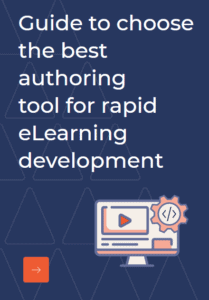Scripting, storyboarding! What could really go wrong?
Well, hold that thought right there. It may not be that easy after all!
Storyboarding and editing isn’t just about wordplay.
A whole lot of things go into it; a learning theory to give it a direction, structure and flow and segues to create a learning continuum, learning interactions to enhance engagement and retention to name a few.
Technically, a storyboard is a tool for creating a screenplay/ blueprint of how the video/eLearning course would play out (frame by frame if one must add). It is a common artefact that enables all involved stakeholders to align and document their design thoughts. It is also a basis for planning the development/production activities.
Creating a rock solid storyboard is critical. It can save precious effort and design heartbreaks in the long run.
So, what are the common pitfalls encountered when writing an eLearning storyboard? And what can be done to avoid them?
#1 Content Overload
You’ve heard of system overload and software crashes. Too much information can do something similar to our learners. It can leave them confused, frustrated and fatigued. As eLearning creators, consider this fact before cramming your course with content. Try to understand the existing level of understanding and avoid the iterative info (things they already know). Avoid making the screens visually too busy. Quickly fading in/fading out pictures, onscreen text and animation displayed simultaneously is a visual onslaught. Learners will lose focus and get tired of multiple things trying to catch their attention at the same time.
#2 Lack of Continuity
Storyboarding is all about creating a flow of content; hence randomness in design is to quite an extent a big NO. Lack of a common theme can disrupt the continuity, leaving the learners clueless. A common theme can be applied to design the verbal and visual play of text; to the interface, which includes the colour scheme, fonts, buttons, icons and user controls, to the digital avatars or characters. However, this must not translate into content and layout that is boringly identical. Using asymmetry in design judiciously can create a beautiful balance between engagement and uniqueness.
#3 Increased Complexities
“Everything should be made as simple as possible, but not simpler.” A quote by Einstein articulates this point well. A well-drafted, simple to interpret storyboard is all that is needed to create learning with varied levels of complexities. Using simple, short and easy to understand vocabulary, while creating the textual and audio content is always recommended. While innovativeness of navigation is a welcome change, making it too complex may not always appeal to the learners; it can just be an unnecessary cognitive load.
Simply put, use the KISS principle—“Keep it Short and Simple.” Having said that, the subject and the target audience for the course may also be a major determining factor.
#4 Lack of Discussion
While most instructional designers prefer to work alone, it may not always be as fruitful as required. Working in a group has often proven to be beneficial. This doesn’t involve just instructional designers but also the graphic designers, developers, audio and visual effects team too. Creative discussions with stakeholders involved in the design and development of the course always prove useful. As a team; discussions provide clarity on instructional, visual and technical aspects as well help the development team be aligned with the business requirements.
#5 Superficial Voiceover
No matter how informative the voiceover is; it doesn’t really work if it fails to complement the visual content of the course. The video or the content needs to be enhanced and supported by the audio narration. The voiceover should not just read-aloud the text on screen; it should have the power to engage the learner. A conversational style, emphasis on words, adequate and appropriate pauses and voice modulation to create an emotional connect are some simple ways of making voiceovers meaningful and relevant for your learners.
#6 Missing Developer Notes
Well, don’t blame the messenger for the wrong message! A storyboard with structure and flow and awesome content may still end up half-baked if it doesn’t include clear and simple developer notes. Developer notes essentially cover instructions on how each screen will play out, what are the expected user interactions, how the learner is expected to respond, what happens after the learner responds, what are the possible navigations, pop-ups, synching and transitions. Without clear directions, the developed version of the course may lack instructional intent.
Very often it is not the big things but mundane errors that throw a monkey wrench into the project. An efficiently (carefully and meticulously) written storyboard, on the other hand, can help in creating a cost-effective and engaging solution.
Worried about creating instructionally sound eLearning?
We are at your beck and call, just a click away.



